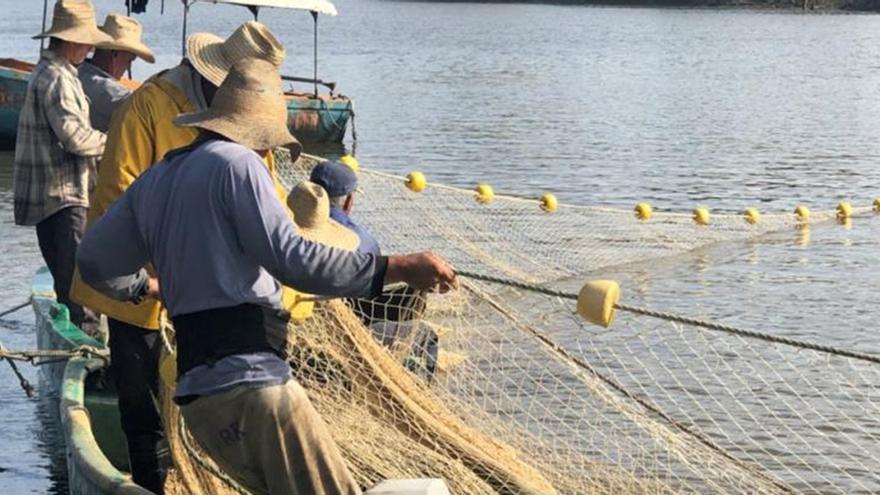
![]() 14ymedio, Havana, 20 April 2023 — The empty nets at the Zaza dam, the largest reservoir in Cuba, have become a constant for fishermen, who warn that there are not enough fish for this year. The situation is reflected in the battered results of the Sancti Spíritus Fishing Company, which closed with a production of just 40% of the plan for the first quarter of 2023.
14ymedio, Havana, 20 April 2023 — The empty nets at the Zaza dam, the largest reservoir in Cuba, have become a constant for fishermen, who warn that there are not enough fish for this year. The situation is reflected in the battered results of the Sancti Spíritus Fishing Company, which closed with a production of just 40% of the plan for the first quarter of 2023.
At the end of March, 291 tons of fish were processed of the 726 planned for the first three months of the year, according to an article in the provincial newspaper Escambray, which also warns that low production will not only affect the company’s workers, but also the “assortment” of this high-protein food on the table of Cuban families.
“The fishermen insist that there are not enough fish in development,” but the most serious thing, the provincial newspaper adds, is the accelerated reduction of the area of operations. The “tanned-skinned men” have to go to more distant places, exposing themselves to more dangerous conditions and strong winds to find the fish, which are still insufficient to meet the production quota.
Between 2018 and 2022, the Directorate of Aquaculture in Sancti Spíritus deposited a little more than 100 million ciprínid fry, a species of fresh water fish, 95% of them from the province itself. But there is another problem: there is no food to accelerate their growth.
Miriam Solano Valle, director of Aquaculture in the province, reminded the newspaper that it has also not been possible to clear the vegetation in the reservoir, which hinders both fish breeding and extraction. However, she said that “work has already begun” on the elimination of weeds thanks to a fuel supply, and, for the moment, they have managed to recover 33 acres.
Solano assumes that the fish are hidden in the undergrowth because extreme weather events have not occurred and the dam’s floodgates have not been opened.
Like almost all productive links on the Island, the fishing sector is facing a deep crisis of low production, in part because it does not have boats to work in international waters and it does not have flowing rivers that allow adequate extraction in fresh waters.
This year they are facing another problem: drought. This is the case of the Gramal reservoir, in the municipality of Manatí in Las Tunas Province, which is almost at the end of its useful life with just 18% of water available, the provincial press confirmed at the beginning of April.
An article in Periódico 26 says that fishermen have not stopped their activities and extract a “significant amount” of tilapia, a species that is not currently produced but, thanks to its natural reproduction, competes with other varieties of demand in the market like sea bream or carp. For some, however, this type of fish is not attractive because of its earthy and moldy flavor.
Ángel Hidalgo Torres, head of the local fishing brigade, told the newspaper that in the municipality of Jesús Menéndez alone they extracted 96 tons of tilapia in March. This is not the case with the Colombia micro-dam, where the volume of water is at 10% of its capacity, while El Canario barely subsists with 6%. To make matters worse, Lavado 5 is almost dry, he said.
“In the coming days we will try to remove as many fish as possible, so that their survival is not affected by the oxygen deficit and poor water quality,” said the fisherman, who believes that there will be enough to offer 100 tons to families in Las Tunas.
Translated by Regina Anavy
____________
COLLABORATE WITH OUR WORK: The 14ymedio team is committed to practicing serious journalism that reflects Cuba’s reality in all its depth. Thank you for joining us on this long journey. We invite you to continue supporting us by becoming a member of 14ymedio now. Together we can continue transforming journalism in Cuba.
